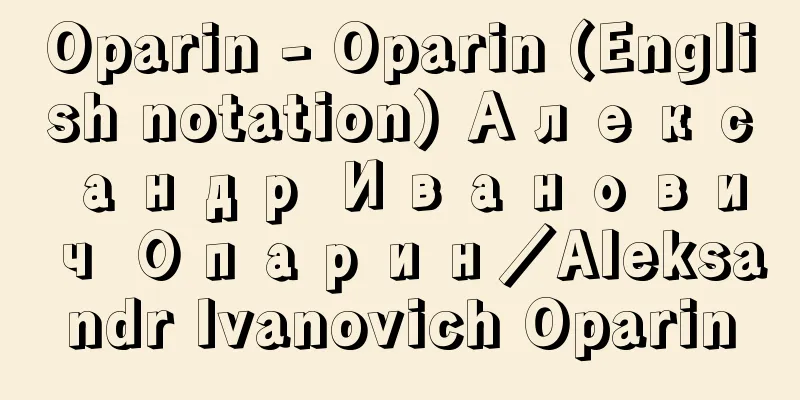Kinoshita Junan

|
A Confucian scholar in the early Edo period. Born in Kyoto on June 4, 1621, as the son of a ronin. His given name was Sadamoto, his pen name was Naoo, and his other names were Kinri and Sobido. His posthumous name was Kyosei Sensei. He was intelligent from an early age, and the monk Tenkai wanted him to be his successor, but he did not accept. He studied Chinese classics under Matsunaga Sekigo. He was known as one of the three Matsunaga disciples, along with Ando Seian and Utsunomiya Ton'an. He went to Edo for a time, but returned to Kyoto and taught at Higashiyama as a student for 20 years. At the age of 40, he was invited to serve Maeda Tsunanori, the lord of the Kaga domain. In 1682 (Tenwa 2), at the age of 62, he became a Confucian scholar of the shogunate and went to Edo, where he founded the Bokumon school, which surpassed the Hayashi school. He nurtured many talented scholars, including Arai Hakuseki, Muro Kyuso, Sakakibara Koshu, Amenomori Hoshu, and Gion Nankai (these are known as the Five Masters of Bokumon). Junan respected the Cheng-Zhu school, but was not limited to it; he loved poetry and prose, was well-versed in ancient commentaries, and was also a fan of Wang Yangming (Wang Shouren). His free and erudite learning and his virtue as an educator made him a great contributor to the literary movement of the early Edo period. He died on December 23, 1781, at the age of 78. His works include the 19 volumes of "Kinribunshu" (Collection of Kinri Writings) (1789), the 2 volumes of "Hankeishu" (Collection of Handicrafts), and others. [Makoto Kurosumi May 19, 2016] "Kinri Anthology with a Biography of Junan Kinoshita, edited by Kazuo Kinoshita (1982, Kokusho Kankokai)" ▽ "Kinoshita Junan and Amemori Hoshu, by Hiroyuki Takeuchi and Hideto Ueno (1991, Meitoku Publishing)" [References] |Amemori | | | | | | | | | |Source: Shogakukan Encyclopedia Nipponica About Encyclopedia Nipponica Information | Legend |
|
江戸前期の儒者。元和(げんな)7年6月4日京都に浪人の子として生まれる。名は貞幹(さだもと)、字(あざな)は直夫、別号は錦里(きんり)、薔薇洞(そうびどう)など。諡(おくりな)に恭靖(きょうせい)先生という。幼少より聡明(そうめい)で、僧天海(てんかい)より法嗣(ほうし)に望まれたが受けず、松永尺五(まつながせきご)のもとで漢学を学んだ。安東省庵(あんどうせいあん)、宇都宮遯庵(うつのみやとんあん)とともに松永門の三庵と称された。一時江戸に出たが、帰京して学徒として東山で教授すること20年、40歳のとき、加賀藩主前田綱紀(まえだつなのり)に招かれて仕えた。1682年(天和2)62歳で幕府の儒官となって江戸に下り、ここに木門(ぼくもん)の学派を生じて、林家を凌駕(りょうが)するほどになった。新井白石(あらいはくせき)、室鳩巣(むろきゅうそう)、榊原篁洲(さかきばらこうしゅう)、雨森芳洲(あめのもりほうしゅう)、祇園南海(ぎおんなんかい)(以上、木門の五先生という)など多くの逸材を育てた。順庵は程朱(ていしゅ)学を尊崇したが、これに局限されず、詩文を愛し、古注釈に通じ、また王陽明(おうようめい)(王守仁(おうしゅじん))も好んだ。その学の自由な該博(がいはく)さと教育家としての徳量とにより、江戸前期の文運に資するところが大きかった。元禄(げんろく)11年12月23日78歳で没した。著書に『錦里文集』19巻(1789)、『班荊(はんけい)集』2巻ほかがある。 [黒住 真 2016年5月19日] 『木下一雄校釈『錦里文集 付木下順庵評伝』(1982・国書刊行会)』▽『竹内弘行・上野日出刀著『木下順庵・雨森芳洲』(1991・明徳出版社)』 [参照項目] | | | | | | | | | | |出典 小学館 日本大百科全書(ニッポニカ)日本大百科全書(ニッポニカ)について 情報 | 凡例 |
Recommend
Sekkanke - Regent
A family lineage that was appointed as regent and...
creeping fescue
…It has become naturalized in various parts of Ja...
Kotosuga Tanikawa
A Japanese scholar of the mid-Edo period. His nam...
Yayoi [town] - Yayoi
A former town in Minamiamabe County, southeastern ...
Treaty of Ansei
…A treaty that established diplomatic relations b...
The story of the earth spider
Otogi-zoshi. There is a picture scroll believed to...
Lowenzahn (English spelling)
…The scientific name of the genus is said to come...
Tremolite (tremolite)
Also called tremolasite or tremola. A calcium amph...
Overview of Early Modern French History
…French historian. Graduated from the Ecole Norma...
San Miguel de Tucumán (English spelling)
…The capital of the province of the same name in ...
Datum plane
…For this reason, each paleontological species gi...
Hardenberg, FLFvon
…A representative poet and philosopher of the ear...
Eaves - eaves
Today, the term eaves refers to a lean-to roof use...
Plate making - Seihan
The making of printing plates. There are manual me...
Afro-American Culture - Afro-American Culture
Afro-American culture is mainly carried by people ...









